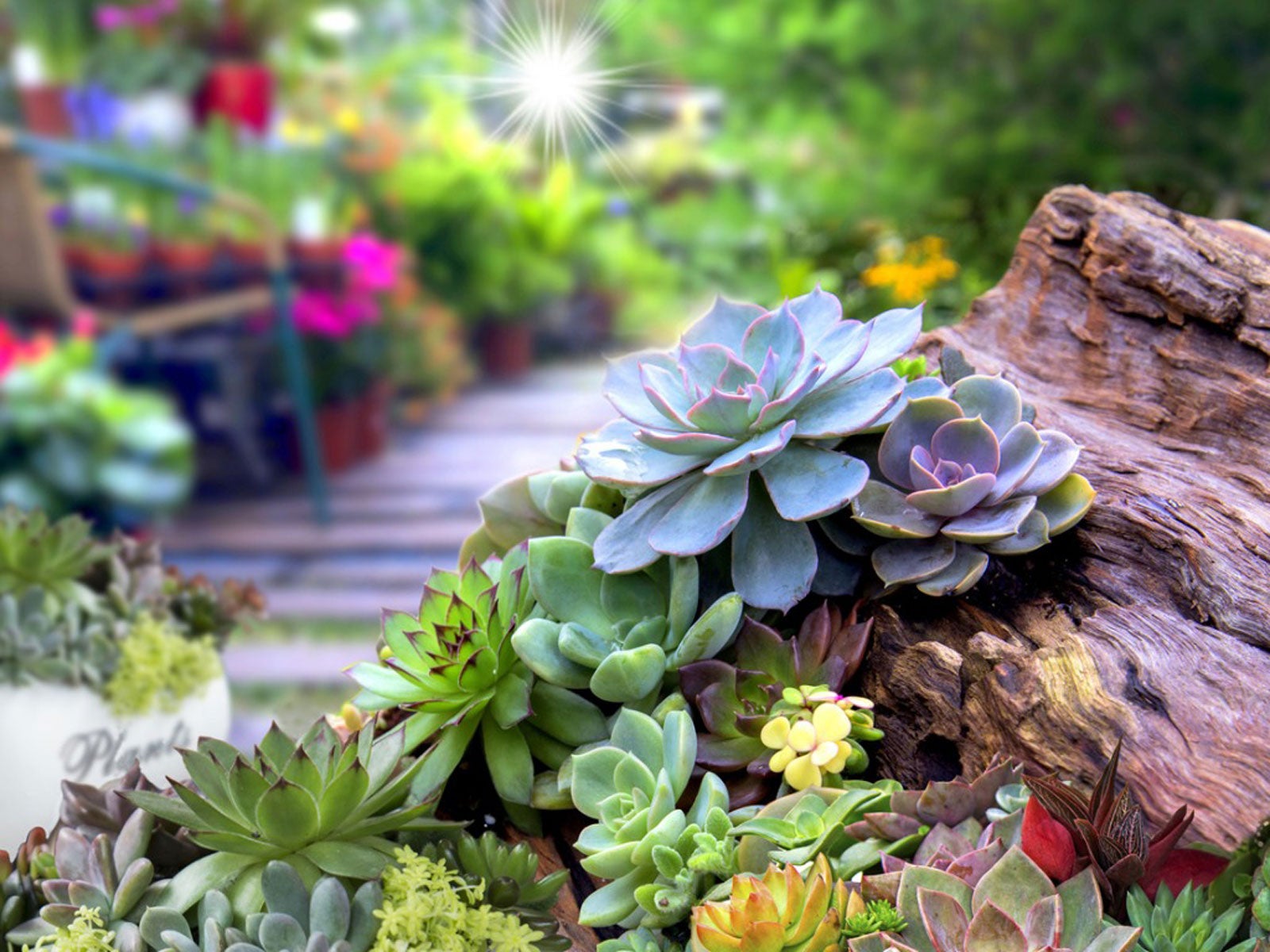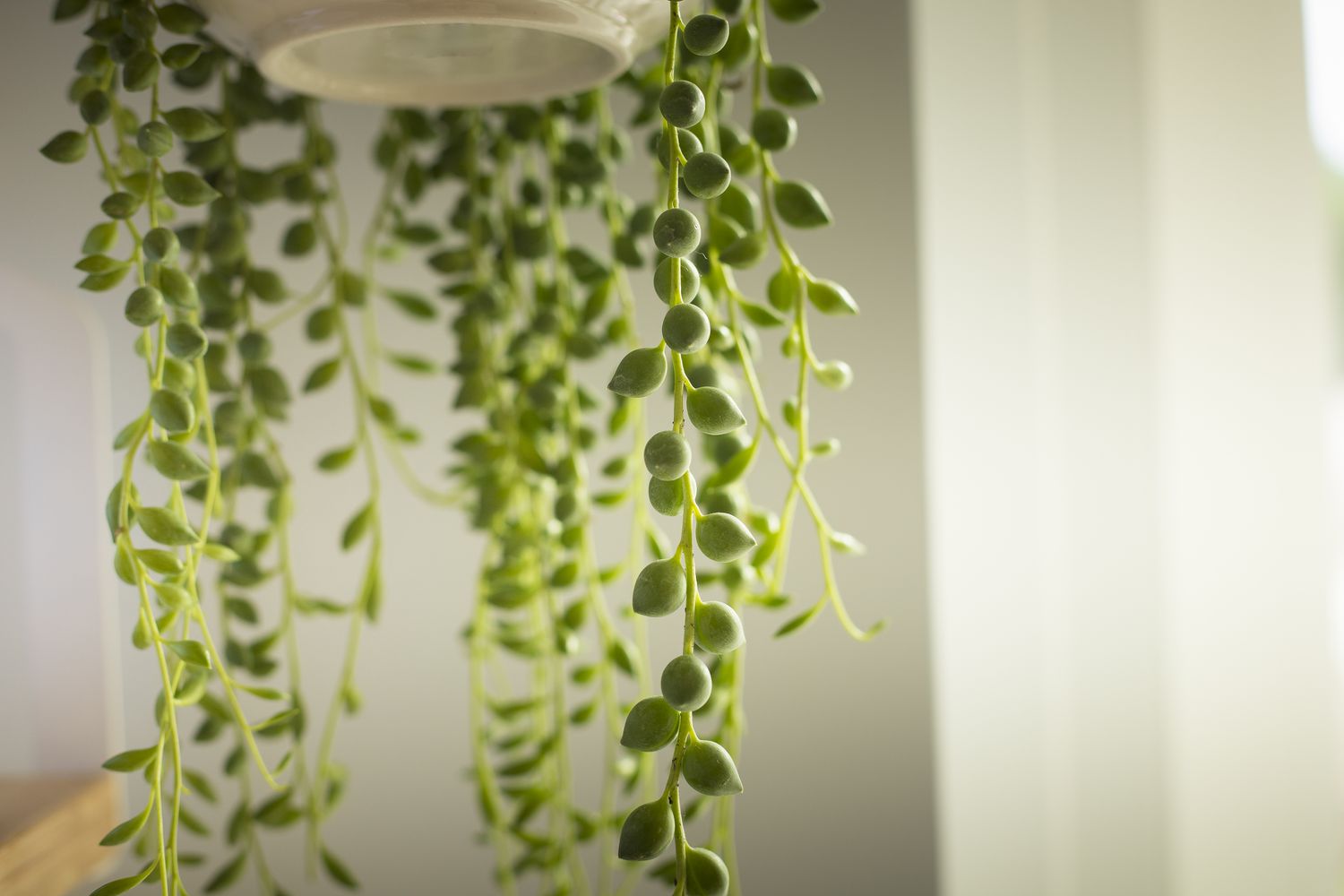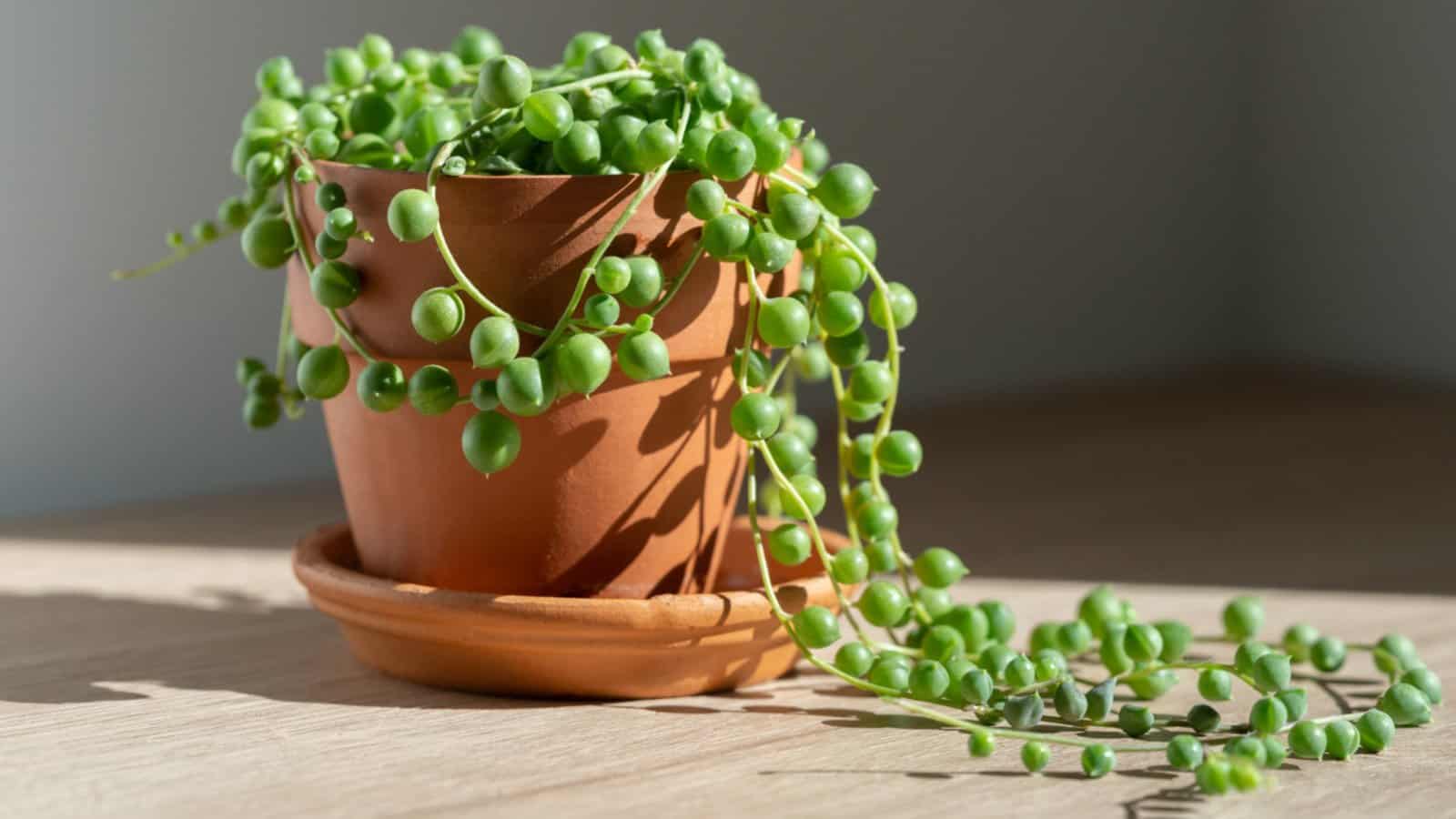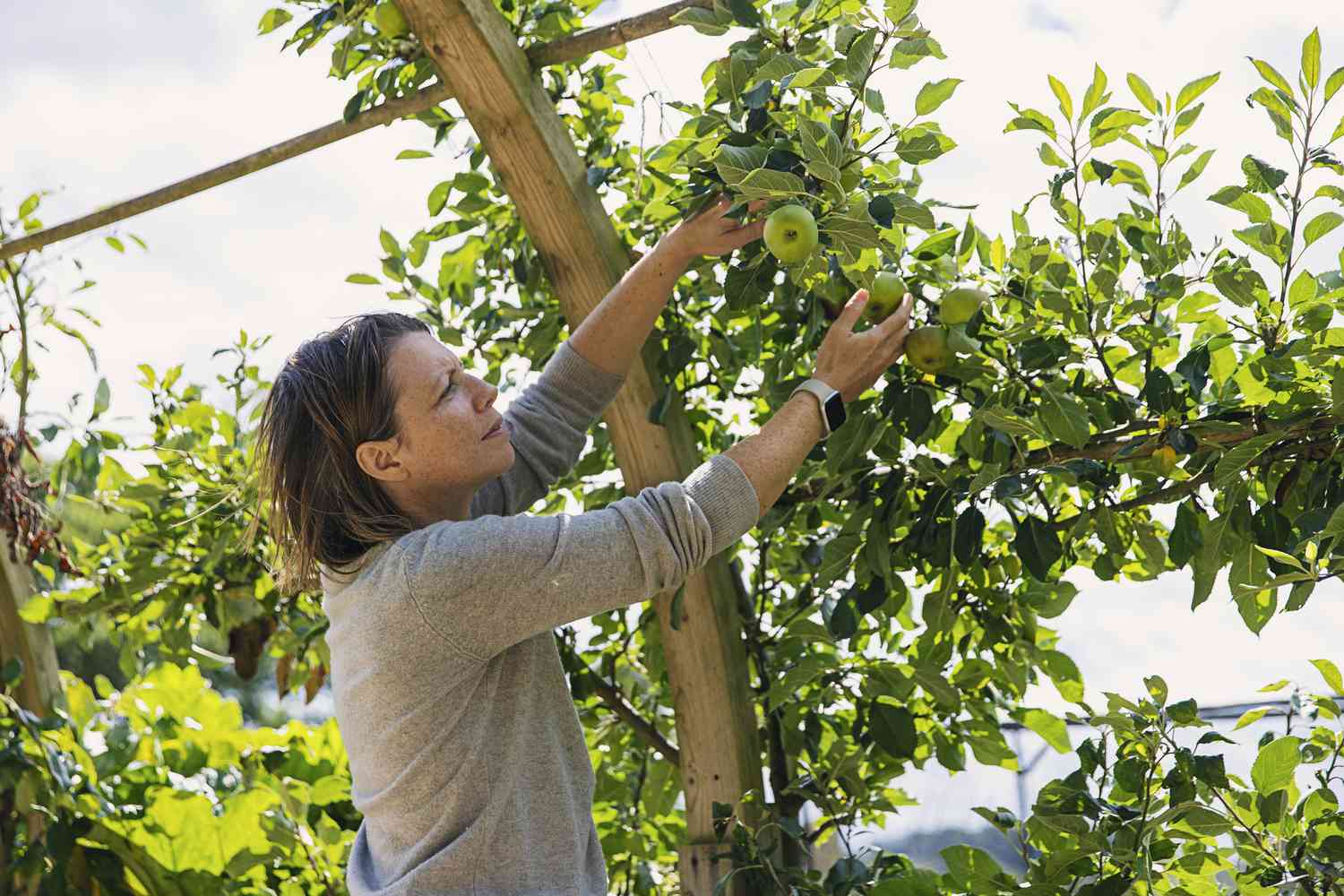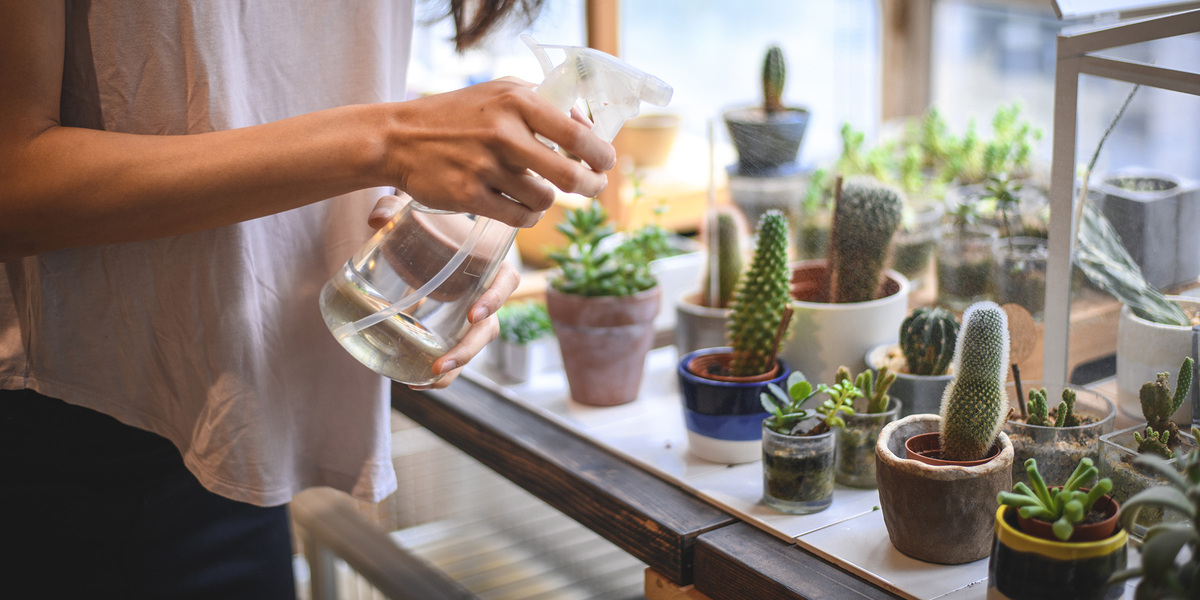Home>Gardening Techniques>Plant Care>How To Take Care Of Succulents
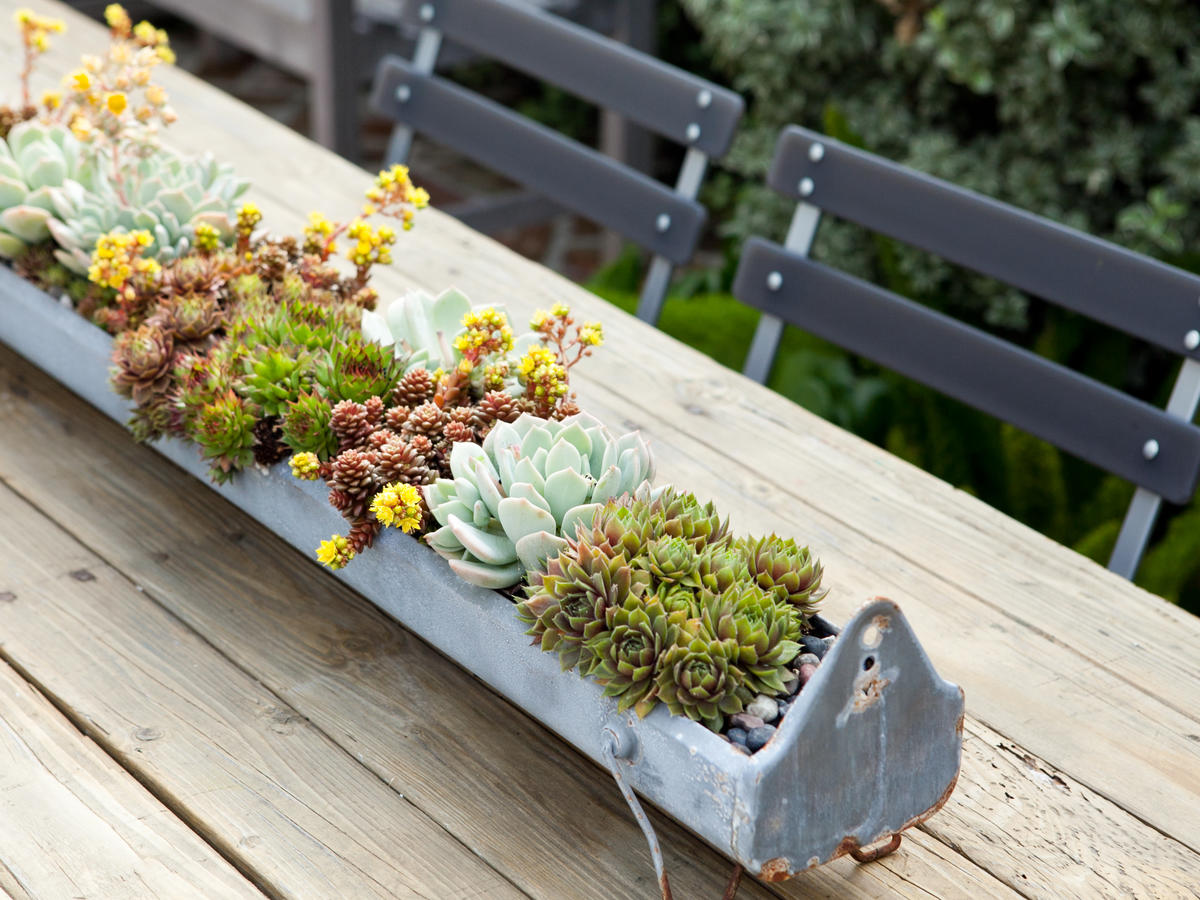

Plant Care
How To Take Care Of Succulents
Modified: January 22, 2024
Learn the best practices for plant care and how to take care of succulents. Expert tips and techniques to keep your succulents healthy and thriving.
(Many of the links in this article redirect to a specific reviewed product. Your purchase of these products through affiliate links helps to generate commission for Chicagolandgardening.com, at no extra cost. Learn more)
Table of Contents
- Introduction
- Choosing the Right Succulents for Your Space
- Providing Adequate Sunlight
- Watering Succulents Correctly
- Creating the Proper Soil Mix
- Maintaining the Right Temperature and Humidity
- Pruning and Propagating Succulents
- Protecting Succulents from Pests and Diseases
- Container Selection and Repotting
- Common Mistakes to Avoid
- Conclusion
Introduction
Welcome to the world of succulents, where beauty and resilience come together in perfect harmony. With their diverse shapes, colors, and textures, succulents have become increasingly popular as indoor and outdoor plants. Whether you’re a seasoned gardener or just starting out, learning how to properly care for succulents will ensure their long-lasting health and vibrant appearance.
Succulents are a type of plant that has adapted to survive in arid environments by storing water in their leaves and stems. This unique feature allows them to withstand periods of drought and thrive with minimal care. Their low-maintenance nature makes them an excellent choice for busy individuals and those with limited gardening experience.
By following a few simple guidelines, you can create an ideal environment for your succulents to thrive. In this article, we will explore essential aspects of succulent care, including choosing the right plants, providing adequate sunlight, watering correctly, creating the proper soil mix, maintaining temperature and humidity, pruning and propagating, protecting from pests and diseases, selecting containers, and avoiding common mistakes.
Whether you have a sunny windowsill, a cozy balcony, or a spacious garden, succulents can bring a touch of nature and tranquility to any space. So let’s dive into the world of succulent care and discover how to nurture these remarkable plants to their fullest potential.
Choosing the Right Succulents for Your Space
When it comes to succulents, the options are virtually endless. There are hundreds of unique species and varieties to choose from, each with its own set of care requirements and aesthetic appeal. To ensure success with your succulent garden, it’s crucial to choose the right plants that will thrive in your specific environment.
The first consideration when selecting succulents is the amount of sunlight your space receives. Some succulents, such as Echeverias and Haworthias, prefer bright indirect light and can tolerate partial shade. Others, like Agave and Aloe, thrive in full sun conditions. Understanding the lighting conditions in your space will help you match succulents that will flourish in that environment.
Another factor to consider is the size of your space. If you have a small apartment or limited outdoor area, opt for compact succulents like Sedums or Crassulas. These varieties stay small and are perfect for container gardening. On the other hand, if you have ample space in your garden or a large indoor area, you can choose larger succulents such as Sempervivums or Agaves, which make a bold statement with their size and architectural forms.
Consider the climate of your region as well. Some succulents are more cold-hardy and can withstand freezing temperatures, while others thrive in warmer climates. If you live in a frost-prone area, select frost-tolerant succulents like Hens and Chicks (Sempervivum) or Stonecrop (Sedum). If you live in a tropical climate, you have the luxury of choosing from a wider range of succulent species, including Euphorbias or Kalanchoes.
Lastly, take into account your personal aesthetic preferences. Succulents come in an array of colors, shapes, and textures, so choose plants that resonate with your style and create the visual impact you desire. From the rosette-shaped leaves of the Jade Plant (Crassula ovata) to the trailing stems of the String of Pearls (Senecio rowleyanus), there is a succulent for every taste and design scheme.
By considering factors such as sunlight, space limitations, climate, and personal preferences, you can select the perfect succulents to bring beauty and life to your space. Keep in mind that different succulents may have different care requirements, so it’s essential to research individual species or consult with your local nursery to ensure that the plants you choose are compatible with your environment.
Providing Adequate Sunlight
Sunlight is one of the most crucial aspects of succulent care. Succulents are native to sunny, arid regions, so providing them with adequate light is essential for their growth and overall health.
Most succulents thrive in bright, indirect light. Place them near a south or east-facing window where they can receive several hours of sunlight each day. If your space doesn’t have enough natural light, you can supplement it with artificial grow lights. LED grow lights are a great option as they provide the right spectrum of light without overheating the plants.
However, it’s important to note that not all succulents have the same light requirements. Some succulents, such as Echeverias and Haworthias, can tolerate partial shade and prefer being shielded from direct sunlight. On the other hand, succulents like Agave and Aloe can handle full sun conditions.
When positioning your succulents, keep in mind that they may need to be rotated periodically to ensure that all sides of the plant receive equal light exposure. This will help prevent the plants from leaning or stretching towards the light source and ensure even growth.
Keep an eye on your succulents for signs of inadequate or excessive sunlight. If a succulent is not receiving enough light, it may start to stretch or elongate, resulting in weak and leggy growth. On the other hand, if a succulent is exposed to too much direct sunlight, its leaves can become scorched and show signs of sunburn.
While succulents can handle high levels of sunlight, it’s essential to strike a balance and protect them from extreme heat, especially during the hot summer months. If you notice that your succulents are getting too much direct sun and are at risk of overheating, consider providing some shade or moving them to a shadier spot during the hottest part of the day.
Overall, providing adequate sunlight is crucial for the healthy growth of your succulents. Finding the right balance of light exposure for each individual plant will ensure their vibrant colors, compact growth, and overall longevity.
Watering Succulents Correctly
When it comes to watering succulents, the golden rule is “less is more.” Succulents have adapted to arid environments and are incredibly efficient at storing water in their leaves and stems, allowing them to withstand periods of drought. Overwatering is one of the most common causes of succulent death, so understanding how to water your succulents correctly is essential.
The frequency of watering will depend on several factors such as the climate, the size of the pot, the type of succulent, and the time of year. As a general rule, it’s better to underwater than to overwater. Succulents can tolerate dry periods, but they are susceptible to root rot if left in soggy, waterlogged soil.
Before watering your succulents, always check if the top inch of soil is completely dry. Use your finger or a moisture meter to gauge the moisture level. If the soil feels damp, wait a few more days before watering. On the other hand, if the soil is dry, it’s time to water.
When watering, it’s important to water deeply and thoroughly. Water the soil around the base of the plant until it starts to flow out of the drainage holes. This ensures that water reaches the root zone and encourages healthy root growth. Avoid misting or spraying the leaves as this can promote fungal diseases.
After watering, allow the soil to dry completely before watering again. Succulents prefer a cycle of wet and dry periods rather than consistently damp soil. During the winter months or periods of dormancy, succulents may require even less frequent watering.
It’s also important to choose the right type of soil and container for your succulents. Well-draining soil is essential to prevent water from pooling around the roots. Use a succulent-specific potting mix or create your own by combining equal parts of perlite, coarse sand, and regular potting soil. A container with drainage holes is paramount to prevent waterlogged soil.
Finally, observe your succulents for any signs of overwatering or underwatering. If a succulent is overwatered, the leaves may appear yellow, mushy, or translucent. On the other hand, underwatered succulents may have shriveled, wrinkled leaves, or may start to drop their leaves altogether.
Remember, the key to watering succulents correctly is to strike a balance and provide them with sufficient water while allowing the soil to dry out between waterings. By following these guidelines, you can ensure the health and longevity of your succulent collection.
Creating the Proper Soil Mix
The right soil mix is crucial for the health and well-being of your succulents. Succulents have unique soil requirements due to their ability to store water in their leaves and stems. Creating a well-draining soil mix is essential to prevent waterlogged roots and promote optimal growth.
When it comes to succulent soil, the key is to provide a mix that drains quickly while still retaining some moisture. A typical succulent soil mix consists of three main components: grit, organic matter, and regular potting soil.
Grit, such as perlite or coarse sand, is essential for creating air pockets in the soil and improving drainage. It prevents water from pooling around the roots and helps to prevent root rot. Adding about 30% to 50% grit to your soil mix is generally recommended.
Organic matter, such as compost or coconut coir, helps to retain some moisture in the soil while also providing nutrients to the plants. It adds structure to the soil and improves water retention without becoming waterlogged. Aim for about 25% to 50% organic matter in your soil mix.
Regular potting soil is the third component of a succulent soil mix. Choose a well-draining potting soil without added moisture-retaining elements, as these can hold too much water for succulents. This component usually makes up the remaining 25% to 45% of the soil mix.
You can opt to purchase a pre-made succulent soil mix from a garden center, which is specifically formulated for succulents. However, if you prefer to create your own soil mix, the above proportions will provide a suitable growing medium for most succulents.
Another consideration when creating the soil mix is the pH level. Succulents prefer slightly acidic to neutral soil, with a pH range between 6.0 and 7.0. Testing the pH of your soil mix using a pH meter or pH test strips can help ensure that it falls within the desired range.
When repotting your succulents, gently remove them from their current pot and shake off any excess soil. Place a layer of the new soil mix at the bottom of the pot, making sure the plant’s roots have enough space to spread out. Fill the remaining space with the soil mix, gently pressing it down to secure the plant.
By creating a soil mix that provides adequate drainage while retaining some moisture, you are setting your succulents up for success. Remember, finding the right balance of grit, organic matter, and potting soil will ensure that your succulents receive the proper nutrients and moisture they need to thrive.
Maintaining the Right Temperature and Humidity
Creating the ideal temperature and humidity conditions is essential for the health and well-being of your succulents. Succulents thrive in dry and arid environments, so it’s important to provide them with the right conditions to mimic their natural habitat.
Most succulents prefer temperatures between 60°F (15°C) and 85°F (29°C). While they can tolerate higher temperatures, prolonged exposure to extreme heat can cause stress and damage to the plants. During hot summer months, providing some shade or moving your succulents to a cooler location can help protect them from excessive heat.
In regions with cooler climates, it’s important to protect your succulents from frost and freezing temperatures. Frost-tolerant succulents like Hens and Chicks (Sempervivum) or Stonecrop (Sedum) can withstand cold temperatures, while more delicate succulents may require protection during the winter months. Consider moving them indoors or providing a protective cover to shield them from extreme cold.
Humidity is another crucial factor to consider when caring for succulents. Succulents are adapted to dry environments with low humidity levels. High humidity can increase the risk of fungal diseases and root rot in succulents. Aim for humidity levels below 50%, especially during periods of active growth and warmer temperatures.
If you live in a naturally humid area, there are several strategies you can employ to lower humidity around your succulents. Increase air circulation by placing a fan nearby, which helps to reduce stagnant air and promote evaporation. Avoid overwatering, as excessive moisture can contribute to high humidity levels. Additionally, placing your succulents near a dehumidifier or in a well-ventilated area can help maintain the appropriate humidity levels.
On the other hand, if you live in a dry climate or during the winter when indoor heating can cause low humidity, consider increasing humidity levels around your succulents. You can use a room humidifier, mist the air around your succulents occasionally, or place a tray filled with water and pebbles beneath the pots to increase humidity through evaporation.
Remember, finding the right balance of temperature and humidity is crucial for the health and well-being of your succulents. By providing a suitable environment that mimics the conditions of their natural habitat, you can ensure the long-term success and vitality of your succulent collection.
Pruning and Propagating Succulents
Pruning and propagating succulents are essential skills to master in order to maintain the shape and size of your plants and expand your collection. Pruning helps to encourage compact growth and remove any damaged or overgrown parts, while propagating allows you to create new plants from existing ones.
Pruning succulents should be done with caution to avoid any damage to the plant. Use clean and sharp pruning shears or scissors to make clean cuts. When pruning, focus on removing any dead, dried, or diseased leaves or stems. This helps to improve air circulation and prevent the spread of diseases.
Pruning can also be done to control the size and shape of your succulents. If a succulent is becoming leggy or elongated, you can prune the top rosette or stem to promote branching and create a more compact and full plant. Pruning can also be done to remove offsets or pups from the base of the plant, which can then be propagated to create new plants.
Propagating succulents is an exciting way to expand your collection and share the joy of succulent gardening with others. There are several methods of propagation that can be used, such as leaf cuttings, stem cuttings, and division.
Leaf cuttings involve carefully removing a healthy leaf from the parent plant and allowing it to callous over for a few days. Once calloused, the leaf can be placed on a well-draining soil mix and lightly misted. Over time, roots will develop, and a new plant will start to grow from the base of the leaf.
Stem cuttings involve taking a healthy stem section from the parent plant, typically with a few leaves attached. Similar to leaf cuttings, the stem cutting is allowed to callous over before being placed in a well-draining soil mix. With time and proper care, the stem cutting will develop roots and grow into a new plant.
Division is a method of propagating where the parent plant is carefully separated into smaller sections, each with its own set of roots. This method is most commonly used for succulents that naturally produce offsets or pups from the base of the plant. Once divided, each section can be potted in its own container and cared for as an individual plant.
Remember, when pruning and propagating succulents, it’s important to handle the plants with care and use clean tools to prevent the spread of diseases. Be patient and provide the proper care and conditions for newly propagated succulents to ensure their successful growth.
Pruning and propagating succulents not only helps to maintain the health and appearance of your plants but also presents an opportunity for experimentation and creativity in your succulent journey.
Protecting Succulents from Pests and Diseases
Maintaining the health of your succulents goes beyond providing the right growing conditions—it also involves protecting them from pests and diseases. While succulents are generally resilient, they can still be susceptible to certain pests and diseases if not properly cared for. By being proactive and taking preventative measures, you can keep your succulents thriving and free from infestations.
Some common pests that can affect succulents include mealybugs, aphids, spider mites, and scale insects. These pests can cause damage by feeding on the plant’s sap and leaving behind a sticky residue or causing discoloration and wilting. To prevent and control these pests, regularly inspect your succulents for any signs of infestation, such as tiny insects, webbing, or distorted growth. If you spot any pests, isolate the affected plant to prevent the infestation from spreading to other plants. You can then remove the pests manually using a cotton swab dipped in rubbing alcohol or a mixture of dish soap and water. For more severe infestations, you may need to use insecticidal soap or a horticultural oil spray, following the instructions on the product carefully.
In addition to pests, succulents can also be susceptible to certain fungal and bacterial diseases. Overwatering, poor air circulation, and high humidity levels can create conditions favorable for diseases such as root rot and powdery mildew. To prevent these diseases, ensure that your succulents are planted in well-draining soil and pots with drainage holes. Avoid overwatering and allow the soil to dry out between waterings. Provide good air circulation by spacing out your succulents and avoiding overcrowding. If you notice any signs of fungal or bacterial diseases, such as mushy or discolored stems or leaves, remove the affected parts using clean and sterilized pruning tools. It’s also important to regularly clean your gardening tools to prevent the spread of diseases.
Another preventive measure to protect your succulents is to use a systemic insecticide and fungicide. These treatments are applied to the soil and are absorbed by the plants, making them less susceptible to pests and diseases. Always follow the instructions on the product label and use these treatments as a last resort after other methods have been ineffective.
Lastly, practicing good hygiene in your succulent garden is essential. Remove any fallen leaves or debris that can attract pests or provide a breeding ground for fungal diseases. Inspect new succulents before introducing them to your collection to ensure they are pest-free. Quarantine new plants for a few weeks to monitor for any signs of infestation or disease before placing them in close proximity to your existing succulents.
By being proactive in protecting your succulents from pests and diseases, you can safeguard their health and preserve their beauty. Regular monitoring, proper care, and prompt action when needed will help keep your succulents thriving and pest-free.
Container Selection and Repotting
Choosing the right containers for your succulents and knowing when to repot them are important aspects of their overall care. The right container provides adequate drainage and space for the succulent’s roots to grow, while repotting ensures that the plants have enough room to thrive and prevents issues such as root bound conditions.
When selecting a container for your succulents, opt for pots with drainage holes. Succulents are prone to root rot if left in waterlogged soil, so proper drainage is essential. Terra cotta or ceramic pots are generally a good choice as they allow for air circulation and water evaporation, helping to regulate soil moisture levels. If you choose a pot without drainage holes, consider using a layer of rocks at the bottom or opt for the double-potting method, where the inner pot with drainage holes is placed inside a decorative outer pot.
The size of the container is also important. Succulents generally prefer snug potting quarters, so choose a container that is slightly larger than the current root ball of the plant. Avoid choosing a pot that is too large as it can lead to stagnant soil and potential overwatering issues.
Knowing when to repot your succulents is crucial for their growth and health. Signs that a succulent may need repotting include roots coming out of the drainage holes, stunted growth, or the plant tipping over easily. Typically, succulents need to be repotted every 1 to 2 years, or when the current container becomes too small to accommodate the root system.
When repotting, gently remove the succulent from its current pot, taking care not to damage the roots. Remove any excess soil and inspect the roots for any signs of rot or disease. If necessary, trim any damaged or unhealthy roots with clean and sterilized pruners. Place a layer of fresh succulent potting mix or a well-draining soil mix at the bottom of the new pot, then carefully position the succulent in the center, making sure the roots have enough room to spread out. Fill the remaining space with the soil mix and gently press down to secure the plant.
After repotting, refrain from watering the succulent for a week or so to allow the roots to heal and adjust to the new environment. Resume regular watering routine after this period, taking into consideration the specific watering needs of your succulent.
Regularly inspect your succulents for any signs of outgrowing their containers to ensure they have enough space to grow and thrive. Remember to choose pots with proper drainage, size them appropriately, and repot them when necessary to promote the overall health and well-being of your succulents.
Common Mistakes to Avoid
Succulents are generally low-maintenance plants, but there are a few common mistakes that many succulent enthusiasts make. Being aware of these mistakes can help you avoid potential issues and ensure the health and longevity of your succulents.
One of the most common mistakes is overwatering. Succulents are adapted to arid environments and have low water requirements. Overwatering can lead to root rot and other fungal diseases. It’s important to allow the soil to dry out between waterings and to use well-draining soil. Remember, it’s better to underwater than to overwater your succulents.
Choosing the wrong soil is another mistake to avoid. Succulents need a well-draining soil mix that allows excess water to freely flow out of the container. Using regular potting soil or soil mixes that retain too much moisture will increase the risk of overwatering and root rot. Always use a soil mix specifically formulated for succulents or create your own mix using materials like perlite, coarse sand, and regular potting soil.
Insufficient light is also a common mistake. Succulents need ample sunlight to thrive. If they don’t receive enough light, they may become stretched or leggy as they search for more sunlight. Ensure that your succulents are placed in a bright location with direct or indirect sunlight for several hours each day. If necessary, use artificial grow lights to supplement the natural light.
Another mistake to avoid is not providing enough airflow. Good air circulation helps prevent the growth of fungal diseases and promotes healthy plant growth. Proper spacing between succulents and avoiding overcrowding will aid in air circulation. If you notice any signs of fungal diseases, such as powdery mildew or black spots, increase air circulation and remove infected parts promptly.
Over-fertilizing succulents is a mistake that can lead to adverse effects. Succulents have low nutrient requirements, and applying too much fertilizer can cause salt buildup in the soil, which can harm the plants. It’s best to fertilize sparingly, following the instructions on the fertilizer packaging. Generally, it’s recommended to fertilize succulents only during the active growing season, typically in spring and summer.
Finally, neglecting to monitor for pests and diseases is a mistake that can lead to significant damage to your succulents. Regularly inspect your plants for signs of pests such as mealybugs, scale insects, or spider mites. Additionally, be on the lookout for any signs of fungal or bacterial diseases, such as rotting stems or wilting leaves. Early detection and prompt action can prevent the spread of pests and diseases and save your plants.
By avoiding these common mistakes, you can ensure the health and vitality of your succulents. Remember to water sparingly, use well-draining soil, provide adequate light and airflow, fertilize appropriately, and be vigilant in monitoring for pests and diseases. With proper care, your succulents will thrive and bring you joy for many years to come.
Conclusion
Caring for succulents can be a rewarding and fulfilling hobby. These resilient plants add beauty and diversity to any space, both indoors and outdoors. By following the guidelines and tips provided in this article, you can ensure that your succulents thrive and remain healthy for years to come.
Remember to choose the right succulents for your space based on lighting, size, climate, and personal preferences. Providing adequate sunlight, watering correctly, creating the proper soil mix, and maintaining the right temperature and humidity are crucial for their well-being. Pruning and propagating your succulents will not only help maintain their shape and appearance but also allow you to expand your collection and share the joy of succulent gardening.
Protecting your succulents from pests and diseases through regular monitoring, proper care, and prompt action is vital in ensuring their health and longevity. Choosing the right containers with proper drainage and repotting when necessary will provide ample space for growth.
Avoiding common mistakes, such as overwatering, using improper soil, insufficient lighting, lack of airflow, over-fertilizing, and neglecting pest and disease control, will prevent potential issues and keep your succulents thriving.
Embrace the beauty and uniqueness of succulents as you care for them with patience and love. By understanding their specific needs and providing optimal growing conditions, you can enjoy the stunning visual appeal and the meditative qualities that these extraordinary plants bring into your life.
So, go ahead and embark on your succulent care journey. Discover new varieties, experiment with propagation, and create your own succulent oasis. May your succulents flourish and bring you joy as you experience the wonder of tending to these remarkable plants!
